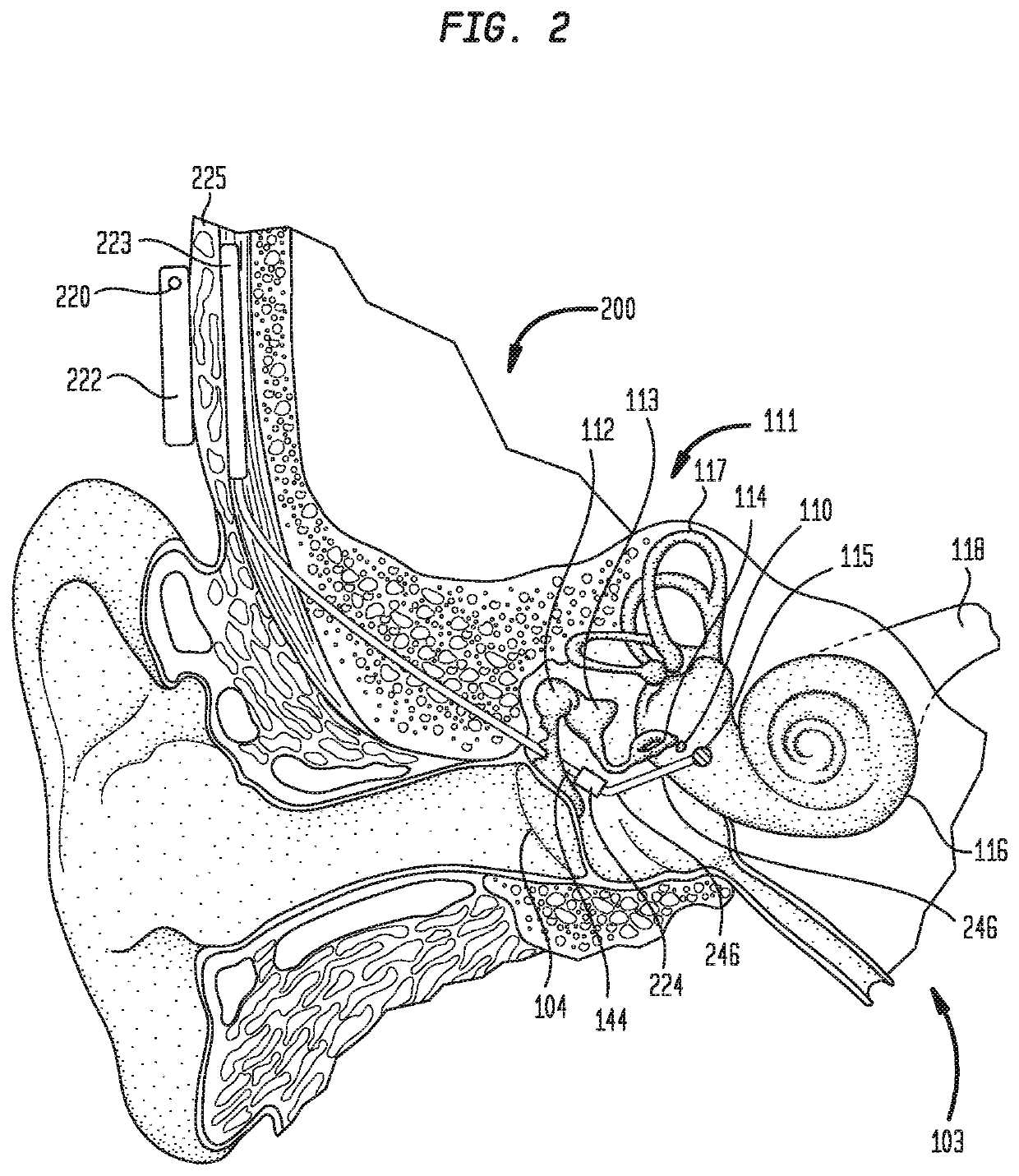Intra-operative determination of vibratory coupling efficiency
a technology of coupling efficiency and measurement method, applied in the direction of electrical equipment, hearing aid testing/monitoring, electrotherapy, etc., can solve the problems of conductive hearing loss and impeded normal mechanical pathways that provide sound to hair cells in the cochlea
- Summary
- Abstract
- Description
- Claims
- Application Information
AI Technical Summary
Benefits of technology
Problems solved by technology
Method used
Image
Examples
Embodiment Construction
[0018]Certain embodiments presented herein are directed to techniques for using objective measurements to determine a combined efficiency of an implantable actuator and a mechanical coupling of the implantable actuator to an auditory structure of an ear of a recipient. For example, in some embodiments the implantable actuator is activated so as to deliver, via the mechanical coupling, mechanical stimulation to the auditory structure to effect a pressure change in an inner ear of the recipient. At least one stimulation device, that is separate from the implantable actuator, is configured to deliver secondary stimulation to the recipient to also effect a pressure change in the inner ear of the recipient. Objective measurements are performed to intra-operatively capture auditory evoked responses of the recipient in response to the mechanical stimulation and in response to the secondary stimulation. These auditory evoked responses are analyzed to determine a vibratory coupling efficienc...
PUM
 Login to View More
Login to View More Abstract
Description
Claims
Application Information
 Login to View More
Login to View More - R&D
- Intellectual Property
- Life Sciences
- Materials
- Tech Scout
- Unparalleled Data Quality
- Higher Quality Content
- 60% Fewer Hallucinations
Browse by: Latest US Patents, China's latest patents, Technical Efficacy Thesaurus, Application Domain, Technology Topic, Popular Technical Reports.
© 2025 PatSnap. All rights reserved.Legal|Privacy policy|Modern Slavery Act Transparency Statement|Sitemap|About US| Contact US: help@patsnap.com



